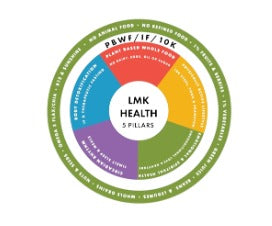Last week, we discussed how lifestyle diseases exist on a continuum, often beginning as soon as a child transitions from breastfeeding to consuming table food. While these diseases start at an early age, their impact may initially be minimal and not noticeable. Wouldn’t it be helpful, though, if there were ways to monitor their progression and raise an alarm when the situation warrants attention? Fortunately, such a measure exists. It’s called Metabolic Syndrome, a composite of five separate factors as outlined below:
1. Waist circumference greater than half of height
The first factor involves weight gain. Fat storage is the body’s way of saving energy for future needs. Subcutaneous fat, stored under the skin, is not necessarily harmful and can be utilized during periods of low food availability. However, fat stored in less healthy areas—such as visceral fat (in the abdominal cavity), fat in the liver (fatty liver), and intramyocellular lipids (in between muscle cells)—poses greater health risks. Waist circumference is a marker for these unhealthy fat deposits. When your waist measurement exceeds half of your height, it’s a sign of potential health issues.
2. Blood pressure above 130/85
The second marker reflects the level of atherosclerosis in the circulatory system. Consuming inflammatory foods inflames the endothelial lining of blood vessels. Your body’s self healing mechanism patches these breaches by putting cholesterol deposits that form plaques. These deposits cover endothelial cells and reduce the release of nitric oxide which in turn increase blood flow friction, and raise blood pressure. A blood pressure reading of 120/80 is considered healthy, while 140/90 indicates hypertension. A midpoint reading of 130/85 serves as the threshold for this metabolic marker.
3. Fasting blood sugar above 110
The consumption of refined sugars, starches and fruit juices, without fiber, contributes to ectopic fat formation in the liver and in between muscle cells (Intramyocellular lipids) which blocks insulin receptors in muscle cells and causes insulin resistance. This resistance results in elevated fasting blood sugar levels. Healthy fasting blood sugar levels fall in the 80s, while levels above 126 indicate type-2 diabetes. The threshold of 110 serves as a warning marker.
4. Triglycerides above 150
Refined fats, which lack fiber, are quickly absorbed into the bloodstream, raising triglyceride levels. Elevated triglycerides overwhelm the body’s ability to store fat safely in subcutaneous fat cells, leading to ectopic fat deposits in the liver, visceral organs, and muscles. A triglyceride level of 150 is considered the cutoff for this marker.
5. HDL cholesterol below 40
Cholesterol is an important nutrient produced by the body. While consuming LDL cholesterol in excess raises its levels in the blood, HDL cholesterol helps remove excess LDL cholesterol in the blood. An HDL level below 40 indicates insufficient LDL cholesterol removal capability making it the fifth marker of ill health.
Metabolic syndrome
If a person has three or more of these five conditions, they are classified as having Metabolic Syndrome, a recognized disease covered by medical insurance. If none of these markers are present, the person is generally in good health.
When people are in good health certain exceptions in consumption of refined foods like oil and sugar are acceptable and within the body’s ability to manage. These are a function of age and number of metabolic markers. This was discussed at length in my blog #40. Here I summarize those again.
Allowed exceptions
There are certain exceptions allowed from the PBWF (Plant-Based Whole Food) guidelines. These exceptions depend on your health status, as determined by the five metabolic markers. Outlined below are various scenarios and the allowance as a percentage of total calories consumed.
- If you are suffering from one or more chronic diseases: No exceptions are allowed.
- If you have recently reversed all your chronic diseases: 5% allowance.
- If you have reversed chronic diseases and have been off medications for at least two years: 7.5% allowance.
- If you have never had chronic diseases but have two metabolic syndrome markers: 7.5% allowance.
- If you have never had chronic diseases but have one metabolic marker: 10% allowance.
- If you are over age 40 and have never had chronic diseases or any metabolic markers: 12.5% allowance.
- If you are under age 30 and have never had chronic diseases or any metabolic markers: 15% allowance.
These allowances apply to food, not condiments used in small quantities. For example, adding a teaspoon of sugar to chutney shared among five people is acceptable.
To conclude, it is essential to monitor metabolic health markers closely, as they serve as early warning signs. These indicators should guide individuals to make necessary improvements in their diet and lifestyle.
Click here to read the full article on Times of India



Share and get 15% off!
Simply share this product on one of the following social networks and you will unlock 15% off!